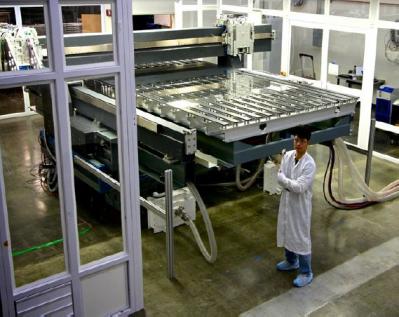COMEDD and partners develop new organic printable transparent electrodes for flexible OLEDs and OPVs
The 3-year German project IMAGE (innovation printable electrode materials for high performance OLEDs and OPVs) has been successfully completed. The project partners (which include Fraunhofer COMEDD and Carnot MIB) demonstrated novel organic transparent electrodes, which are arranged on a backing film and enable flexible electronic components.
The performance of these electrodes was demonstrated using flexible OLEDs and OPVs. COMEDD explains that new electrodes could replace conventional transparent metal oxides, such as ITO - which is less cost effective and less flexible. COMEDD can now manufacture flexible organic devices using the new electrodes, and the project partners are looking for industry partners to commercialize this technology.








